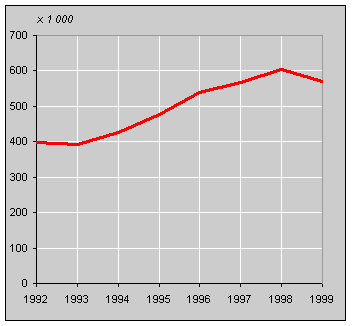Flex workers mainly young and female

Forty percent of flex workers are under 25. Generally they are still in education and they consider their work as a job on the side. Boys often fill shelves, work in loading and unloading, in shops, hotels, restaurants, etc., while for girls the three most popular jobs are shop assistants, check out girls, and waitressing.
Female employees are more likely to work on a flexible contract than men. In 1999 some 13% of all employed women were on a flexible contract, compared with 7% of the male work force.
No further increase
In 1999 some 571,000 employees had a flexible contract, bringing the sharp rise in the number of flex workers in the nineties to a halt. This development was prompted by the increasingly short labour supply which has given people a chance to negotiate better terms of employment, including permanent contracts.
People working on a flex contract

Less educated
In general flex workers are not as well educated as employees on a permanent contract. Fewer have a higher secondary, college or university degree. Young flex workers are often still in school, and many expect to complete higher education levels. However, the education level of flex workers aged 25-64 is also lower than that of permanent staff in that age group.
Hotels and restaurants very flexible
The largest number of flex workers have jobs in hotels, restaurants etc., where one in four employees does not have a permanent contract. In fact, as many as a third of all female employees in this sector work on a flexible contract. The share of flex workers in trade is also higher than the national average, whereas in education there are relatively few (6%).
Marijke Hartgers and Annemarie Boelens